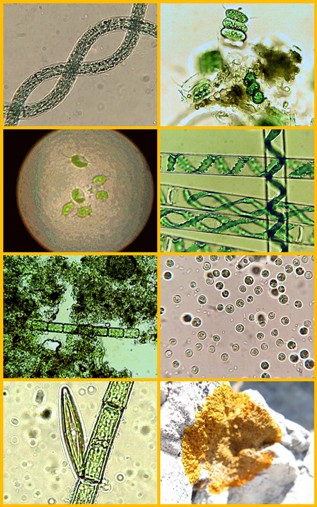Main menu
You are here
What are Algae?
 The term algae has only a vague meaning, even more, its meaning has been changing during last decades. Traditionally, it meant all photosynthetic organisms, mostly aquatic, that are not plants (i.e. that have no plant organs). This includes diverse group of photosynthetic organisms from very large macroalgae (e.g. kelp) to microscopical unicellular microalgae, including cyanobacteria.
The term algae has only a vague meaning, even more, its meaning has been changing during last decades. Traditionally, it meant all photosynthetic organisms, mostly aquatic, that are not plants (i.e. that have no plant organs). This includes diverse group of photosynthetic organisms from very large macroalgae (e.g. kelp) to microscopical unicellular microalgae, including cyanobacteria.
For the technological purpose we can stick to this definition: many species of unicellular microalgae and cyanobacteria that are technologically used. Microalgae come in all varieties, mostly unicellular organisms, many are free floating in the fresh or marine water, others live attached to some substrates. Microalgae are cultivated in photobioreactors and ponds. Macroalgae are cultivated in marine habitats and harvested. Unless otherwise indicated the term algae on our webpages will mean microalgae including cyanobacteria.
A more strict taxonomy differentiates between prokaryotic cyanobacteria and eukaryotic algae (yes, Spirulina is not an alga under modern definition). Algae are further divided into several groups. The number of registered species varies between 25-40 thousands.
Algae are primary producers: by using inorganic ions, CO2, water and solar energy the complex organic molecules are produced. Oxygen is released in this process. Algae, cyanobacteria and plants indirectly produce all food and all oxygen for all living organisms on our planet. Algae and cyanobacteria produce at least 50% of all oxygen in our atmosphere. Recent discoveries of very abundant marine cyanobacteria may push this number into the 70-80% range, so that marine photosynthesis is much more important than rainforrest (which must not be destroyed for other reasons).




